Corsair TX750M PSU Review
Why you can trust Tom's Hardware
Transient Response Tests
Advanced Transient Response Tests
For details on our transient response testing, please click here.
Ιn these tests, we monitor the TX750M's response in several scenarios. First, a transient load (10A at +12V, 5A at 5V, 5A at 3.3V, and 0.5A at 5VSB) is applied for 200ms as the PSU works at 20 percent load. In the second scenario, it's hit by the same transient load while operating at 50 percent load.
In the next sets of tests, we increase the transient load on the major rails with a new configuration: 15A at +12V, 6A at 5V, 6A at 3.3V, and 0.5A at 5VSB. We also increase the load-changing repetition rate from 5 Hz (200ms) to 50 Hz (20ms). Again, this runs with the PSU operating at 20 and 50 percent load.
The last tests are even tougher. Although we keep the same loads, the load-changing repetition rate rises to 1 kHz (1ms).
In all of the tests, we use an oscilloscope to measure the voltage drops caused by the transient load. The voltages should remain within the ATX specification's regulation limits.
These tests are crucial because they simulate the transient loads a PSU is likely to handle (such as booting a RAID array or an instant 100 percent load of CPU/GPUs). We call these "Advanced Transient Response Tests," and they are designed to be very tough to master, especially for a PSU with a capacity of less than 500W.
Advanced Transient Response at 20 Percent – 200ms
| Voltage | Before | After | Change | Pass/Fail |
|---|---|---|---|---|
| 12V | 12.081V | 11.888V | 1.60% | Pass |
| 5V | 5.036V | 4.953V | 1.65% | Pass |
| 3.3V | 3.326V | 3.159V | 5.02% | Pass |
| 5VSB | 5.048V | 5.014V | 0.67% | Pass |
Advanced Transient Response at 20 Percent – 20ms
| Voltage | Before | After | Change | Pass/Fail |
|---|---|---|---|---|
| 12V | 12.081V | 11.820V | 2.16% | Pass |
| 5V | 5.036V | 4.939V | 1.93% | Pass |
| 3.3V | 3.326V | 3.092V | 7.04% | Fail |
| 5VSB | 5.048V | 5.002V | 0.91% | Pass |
Advanced Transient Response at 20 Percent – 1ms
| Voltage | Before | After | Change | Pass/Fail |
|---|---|---|---|---|
| 12V | 12.080V | 11.951V | 1.07% | Pass |
| 5V | 5.035V | 4.929V | 2.11% | Pass |
| 3.3V | 3.325V | 3.109V | 6.50% | Fail |
| 5VSB | 5.048V | 4.998V | 0.99% | Pass |
Advanced Transient Response at 50 Percent – 200ms
| Voltage | Before | After | Change | Pass/Fail |
|---|---|---|---|---|
| 12V | 12.354V | 12.276V | 0.63% | Pass |
| 5V | 5.028V | 4.942V | 1.71% | Pass |
| 3.3V | 3.319V | 3.128V | 5.75% | Fail |
| 5VSB | 5.033V | 4.998V | 0.70% | Pass |
Advanced Transient Response at 50 Percent – 20ms
| Voltage | Before | After | Change | Pass/Fail |
|---|---|---|---|---|
| 12V | 12.061V | 11.950V | 0.92% | Pass |
| 5V | 5.027V | 4.923V | 2.07% | Pass |
| 3.3V | 3.319V | 3.084V | 7.08% | Fail |
| 5VSB | 5.033V | 4.991V | 0.83% | Pass |
Advanced Transient Response at 50 Percent – 1ms
| Voltage | Before | After | Change | Pass/Fail |
|---|---|---|---|---|
| 12V | 12.061V | 11.950V | 0.92% | Pass |
| 5V | 5.027V | 4.902V | 2.49% | Pass |
| 3.3V | 3.319V | 3.063V | 7.71% | Fail |
| 5VSB | 5.034V | 4.973V | 1.21% | Pass |
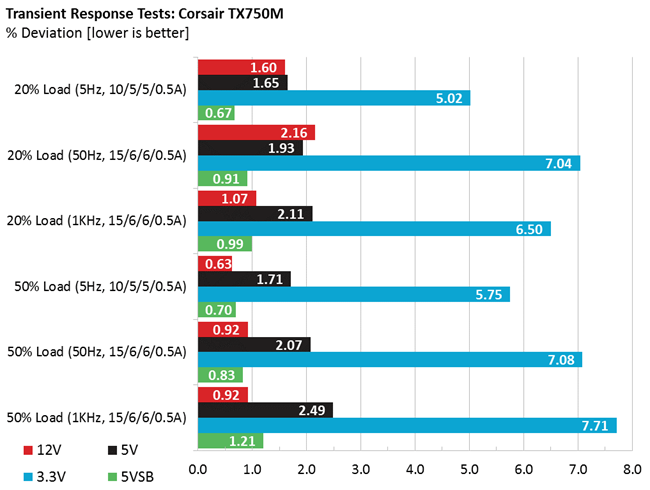
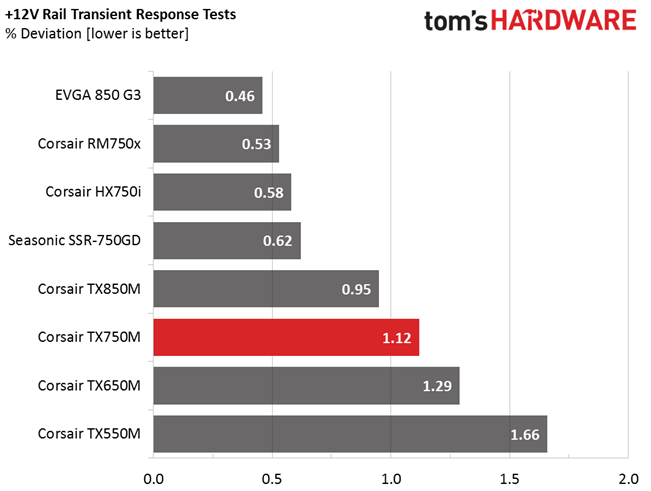
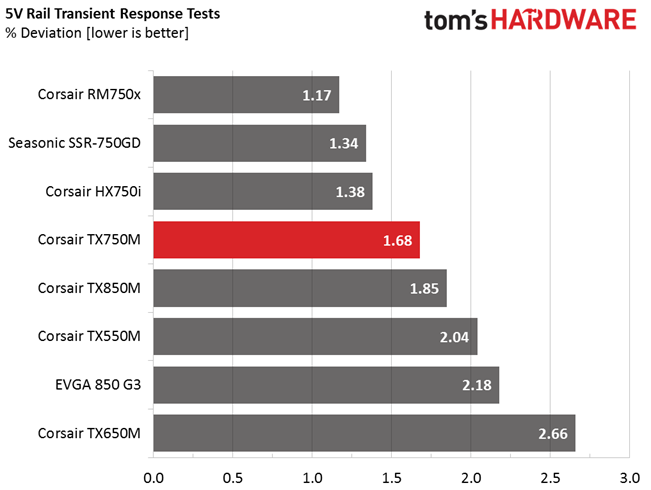
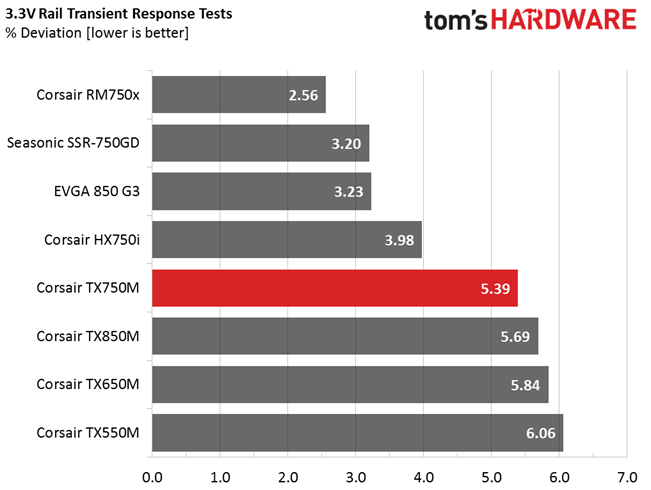
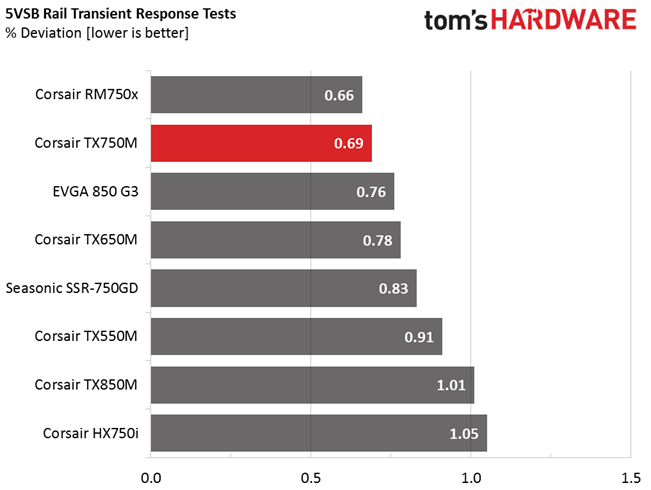
In general, the +12V rail performs well, with the 5V and 5VSB rails following.
Get Tom's Hardware's best news and in-depth reviews, straight to your inbox.
Conversely, the 3.3V rail registers high deviations, leading to failures in almost every test. Without a doubt, the 3.3V rail needs some work if it hopes to achieve a decent transient response.
Here are the oscilloscope screenshots we took during Advanced Transient Response Testing:
Transient Response At 20 Percent Load – 200ms
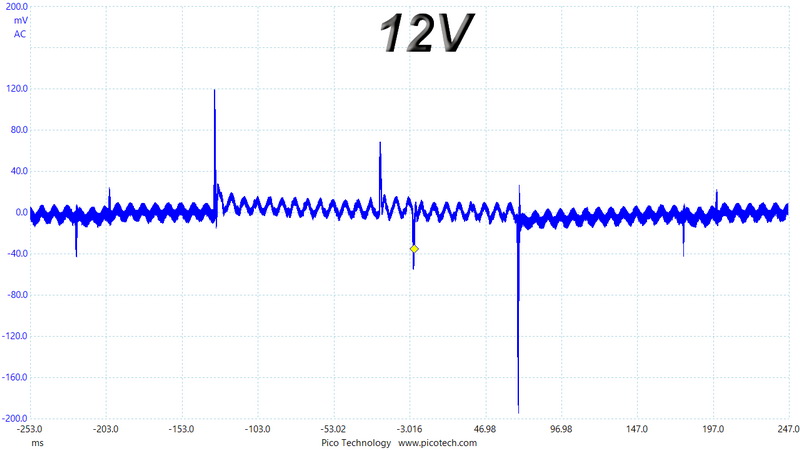
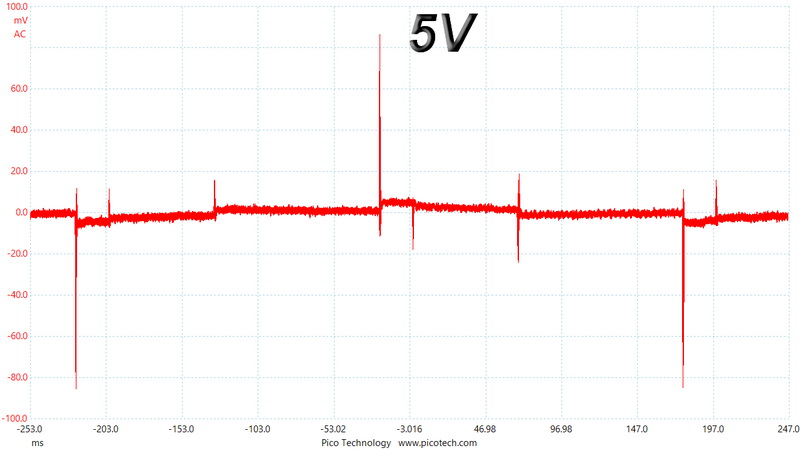
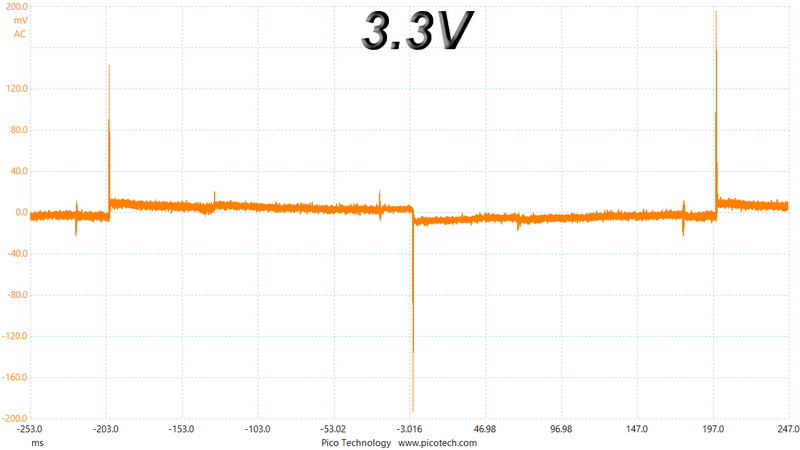
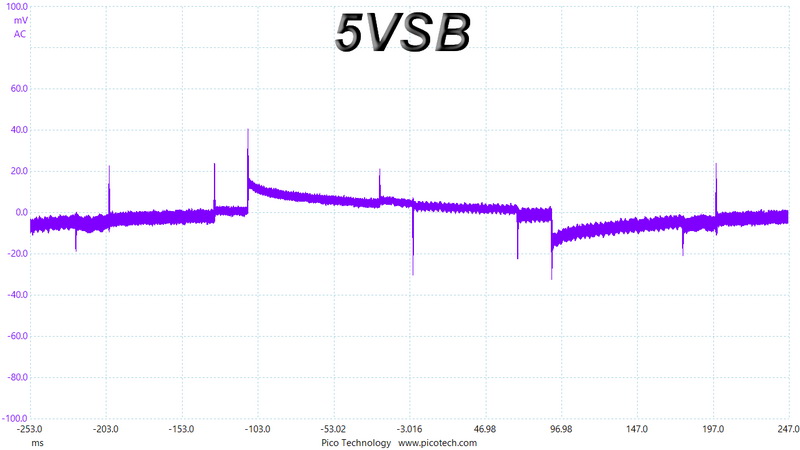
Transient Response At 20 Percent Load – 20ms
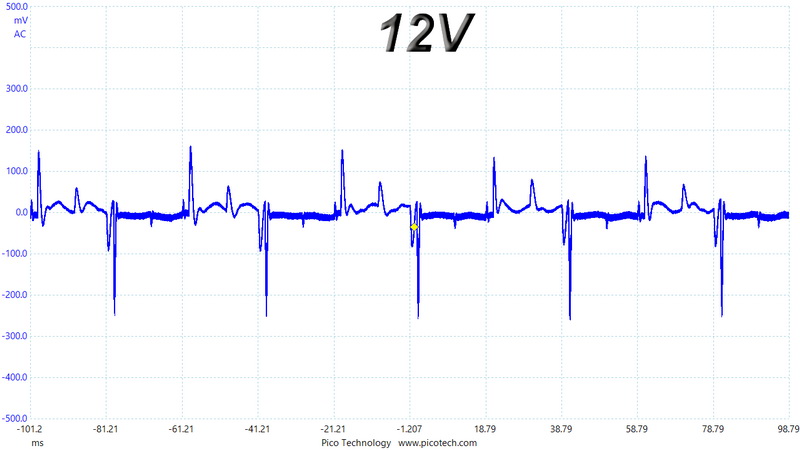
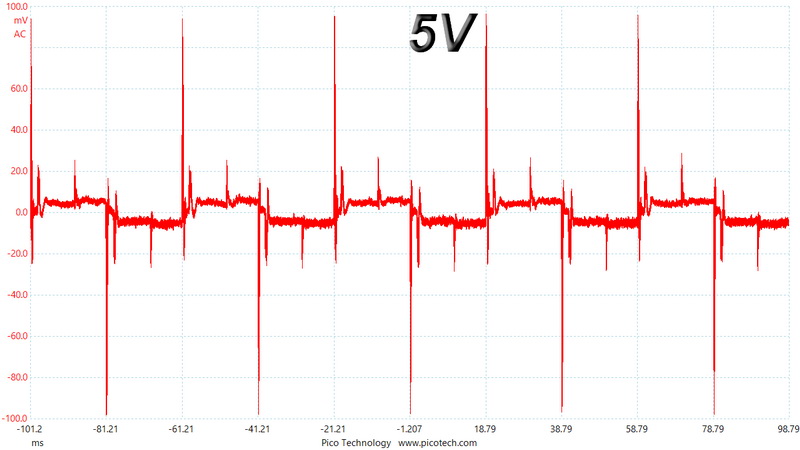
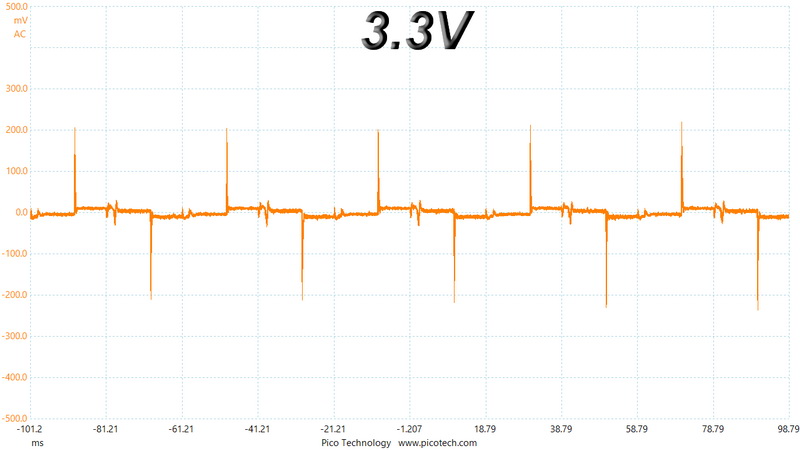
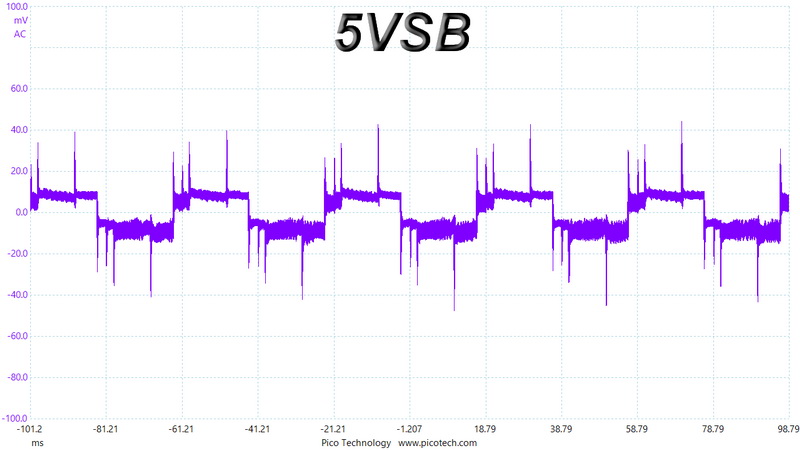
Transient Response At 20 Percent Load – 1ms
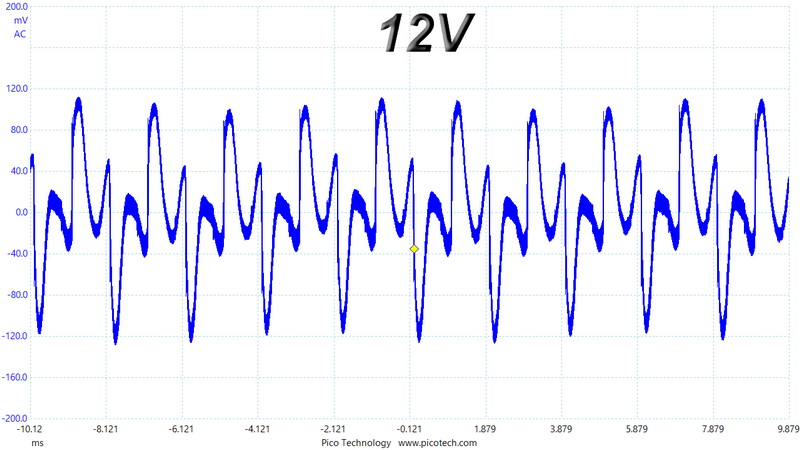
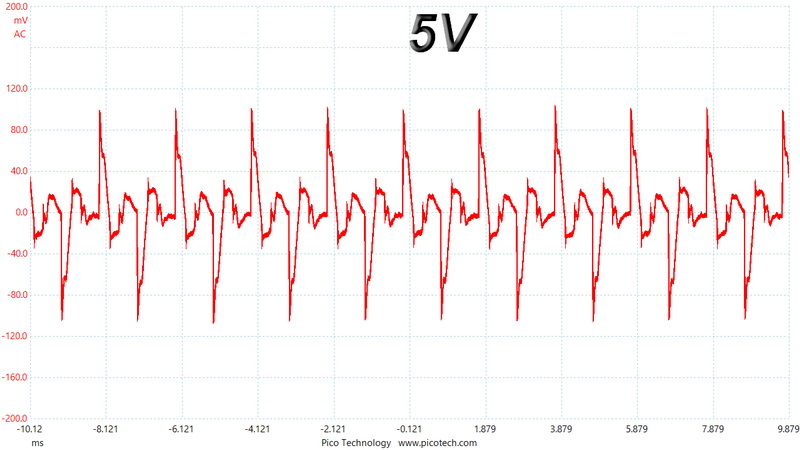
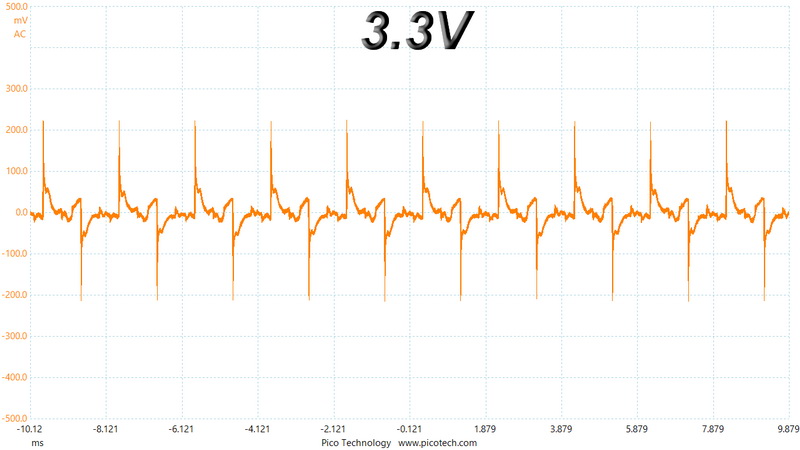
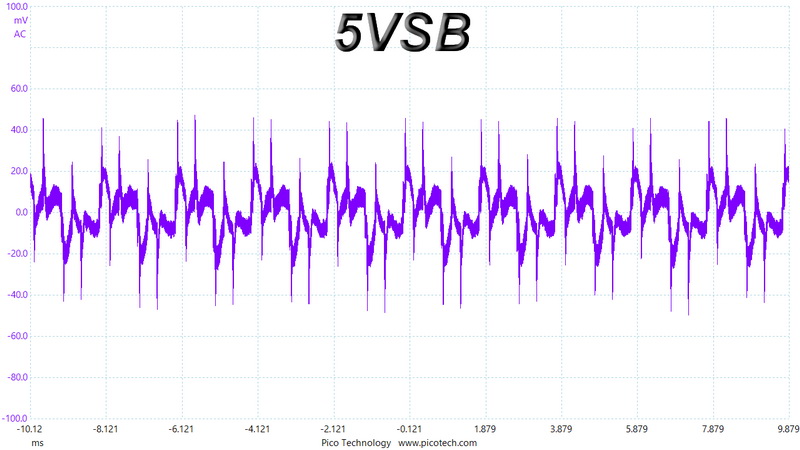
Transient Response At 50 Percent Load – 200ms
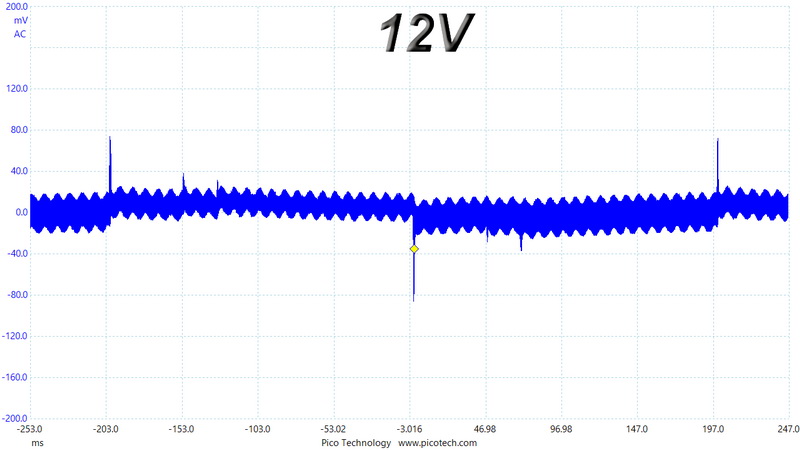
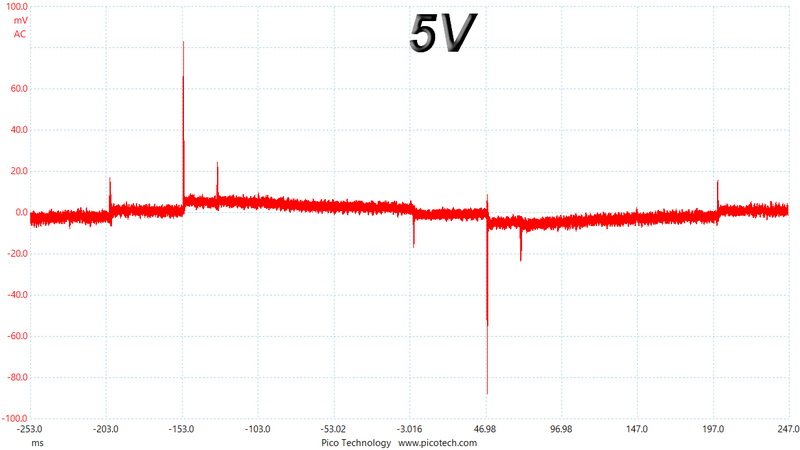
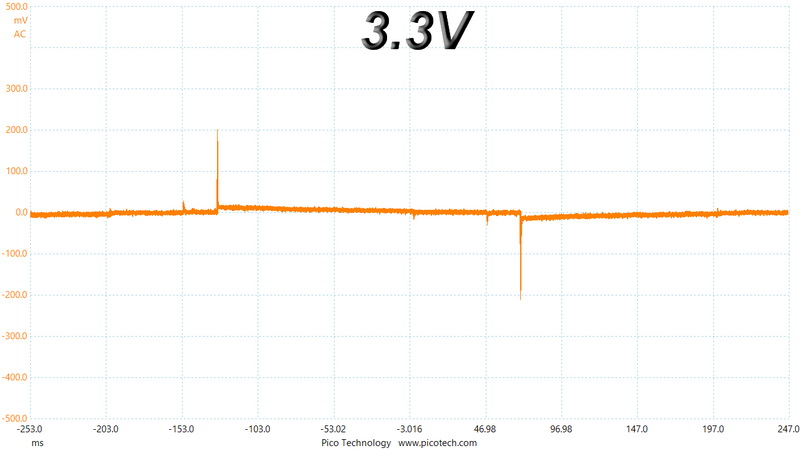
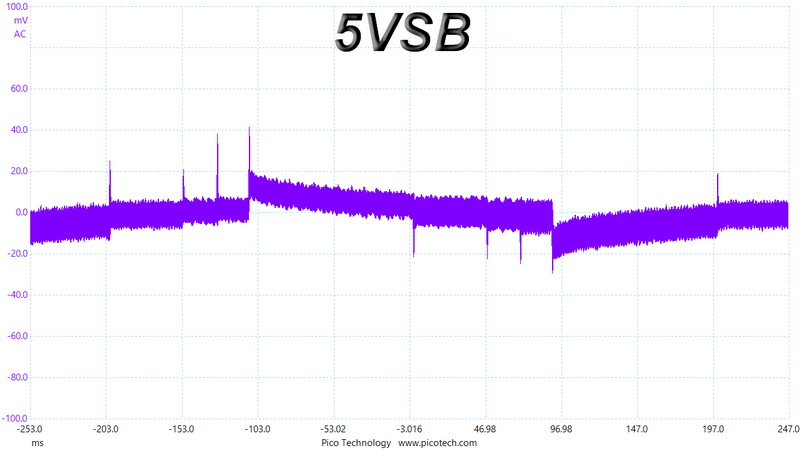
Transient Response At 50 Percent Load – 20ms
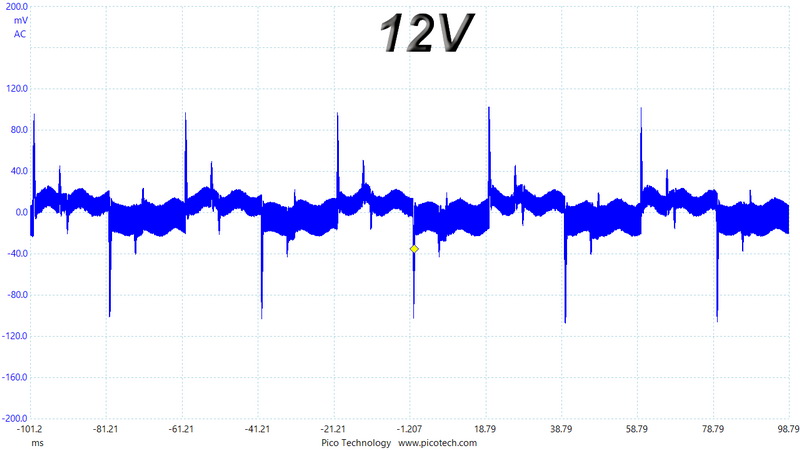
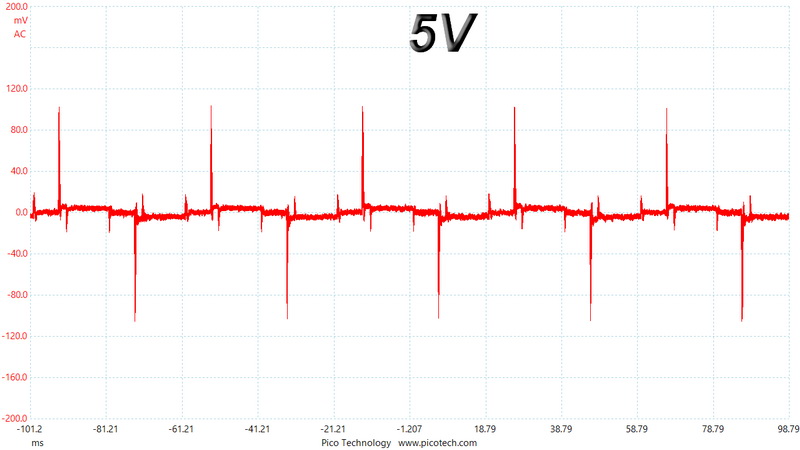
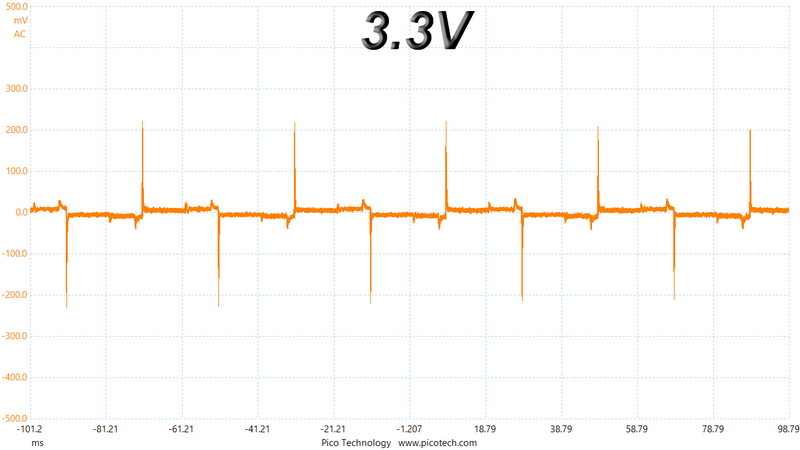
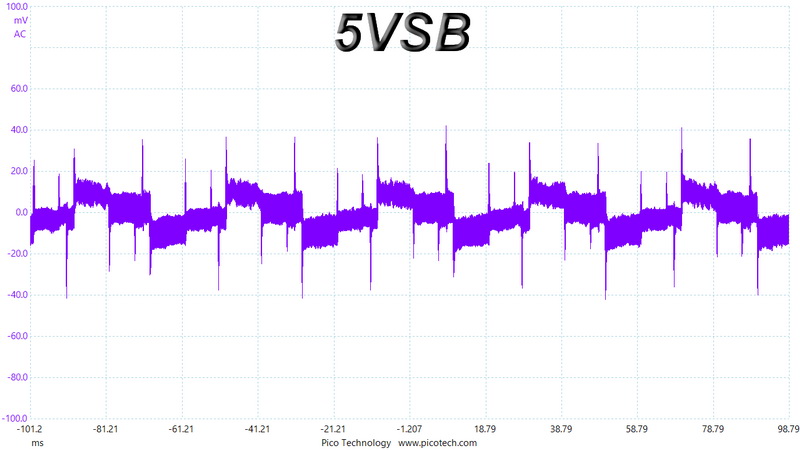
Transient Response At 50 Percent Load – 1ms
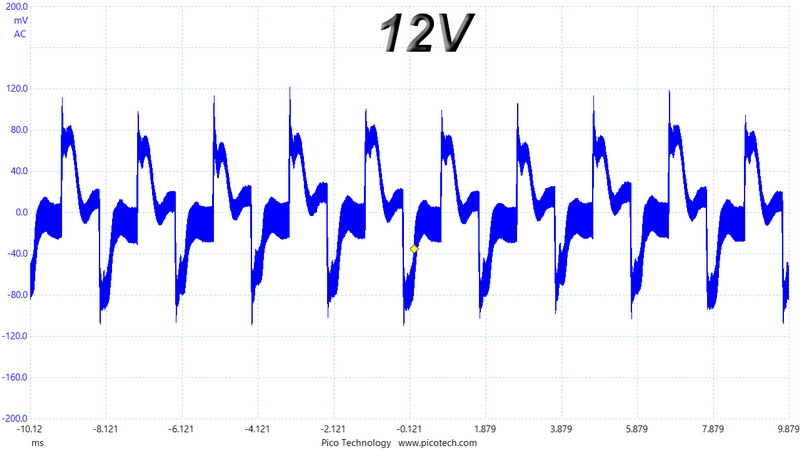


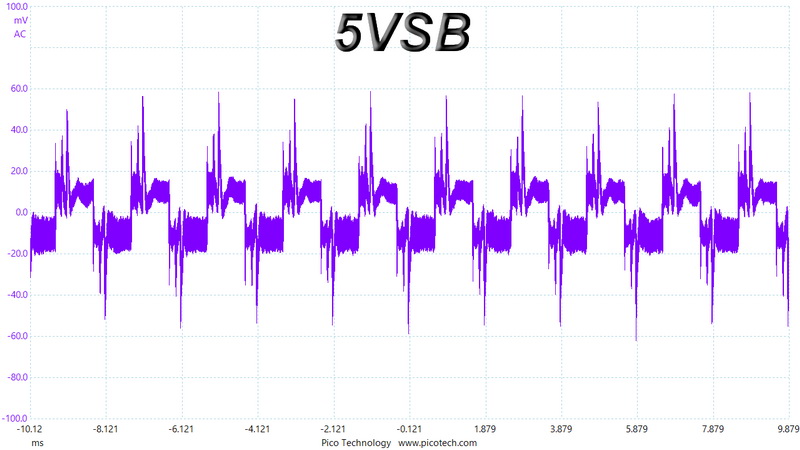
Turn-On Transient Tests
In the next set of tests, we measure the PSU's response in simpler transient load scenarios—during its power-on phase.
For the first measurement, we turned the TX750M off, dialed in the maximum current the 5VSB could output and switched the PSU back on. In the second test, we dialed the maximum load the +12V could handle and started the 750W supply while it was in standby mode. In the last test, while the PSU was completely switched off, we dialed the maximum load the +12V rail could handle before switching it back on from the loader and restoring the power. The ATX specification states that recorded spikes on all rails should not exceed 10 percent of their nominal values (+10 percent for 12V is 13.2V, and 5.5 V for 5V).

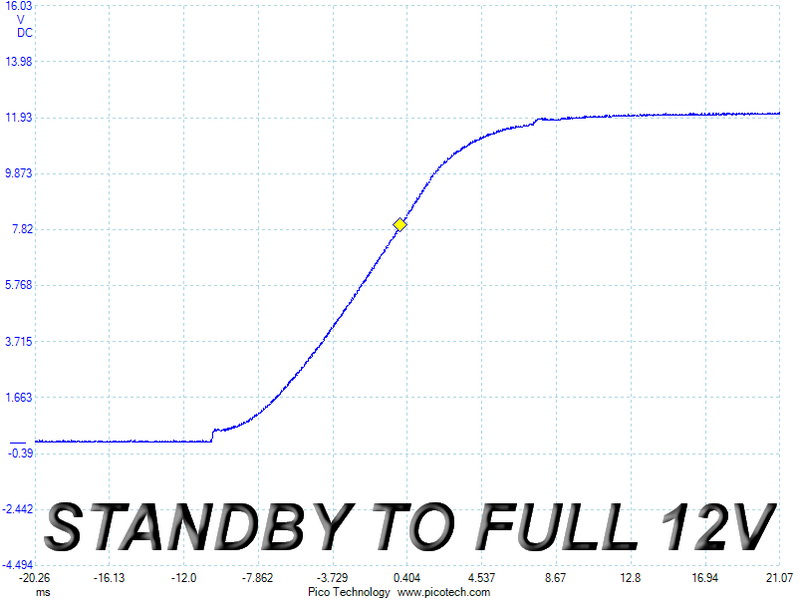
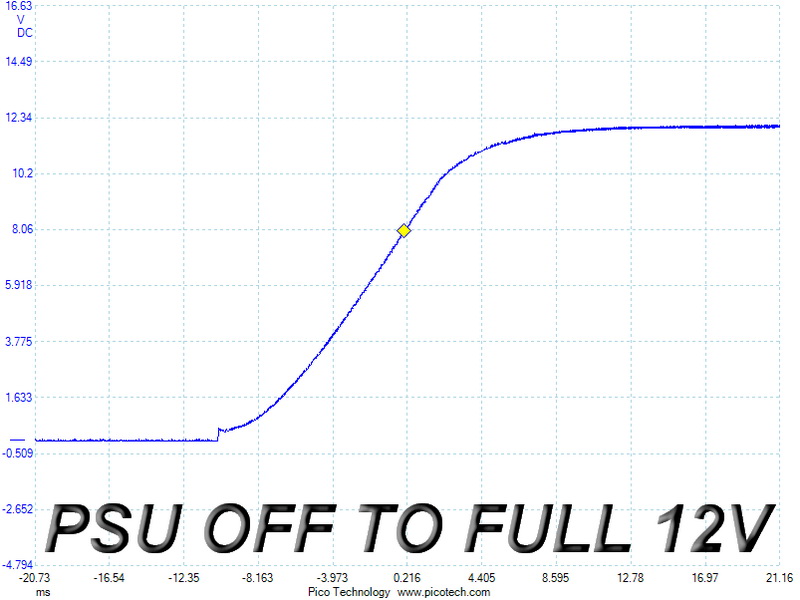
As you can see in the scope screenshots, everything looks good here.
MORE: Best Power Supplies
MORE: How We Test Power Supplies
MORE: All Power Supply Content
Current page: Transient Response Tests
Prev Page Cross-Load Tests & Infrared Images Next Page Ripple Measurements
Aris Mpitziopoulos is a contributing editor at Tom's Hardware, covering PSUs.
-
NinjaNerd56 I have one of the 'sister' versions of this PSU. I like it a lot. My case is all air cooled, so I never hear the fan on the Corsair.Reply -
Dom_79 So I guess this is a "re-release" of the TX-xxxM semi-modular line?Reply
https://www.newegg.ca/Product/Product.aspx?Item=N82E16817139030
I have one of these ^ sitting in a box somewhere. Not that bad a unit but I hope they don't go through another "V2" fiasco with thise new line. If memory serves, the last time the issue was attributed to using a newer OEM manufacturer...
Great review though! Very thorough and well presented :) -
Nuckles_56 Thanks for the review Aris, it looks like with a few tweaks, this platform could really kill itReply -
Dark Lord of Tech Any chance to review the new CX series released by Corsair recently. Not the M , but the non modular CX.Reply